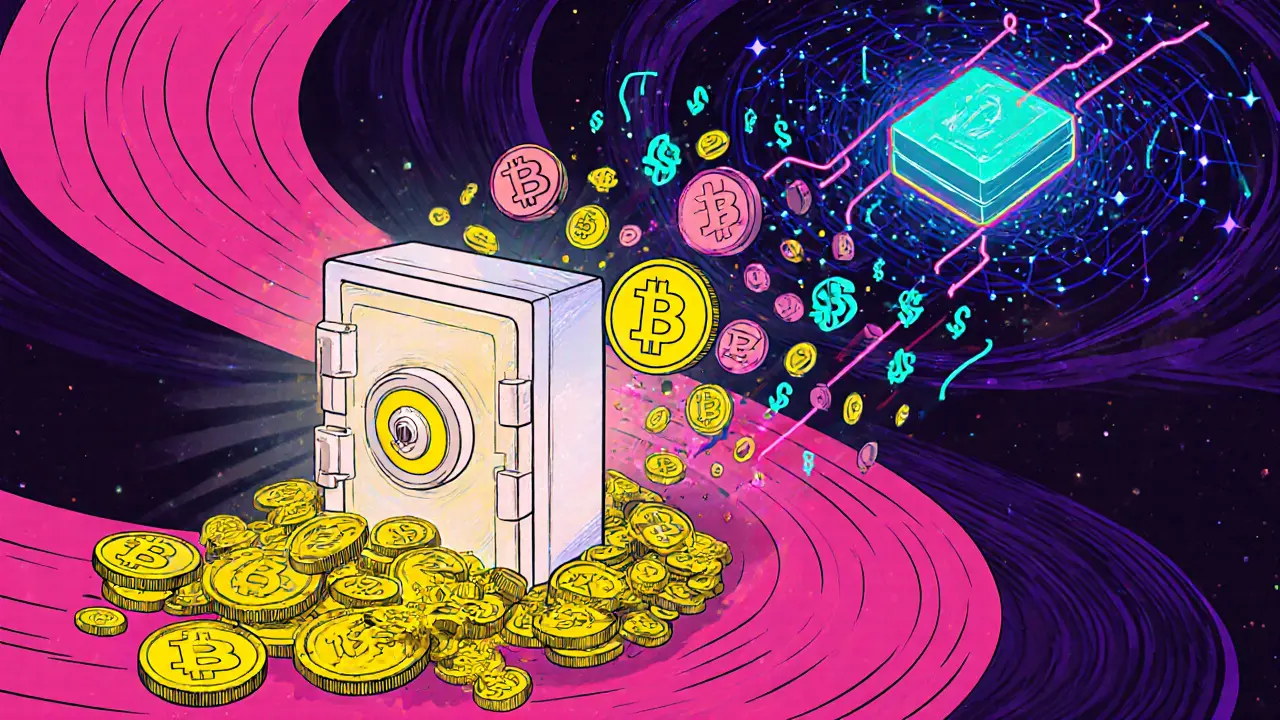DeFi: A Practical Overview of Decentralized Finance
When you hear DeFi, the ecosystem of blockchain‑based financial services that run without traditional intermediaries Decentralized Finance, you might wonder how it actually changes everyday money moves. In simple terms, it lets anyone earn, borrow, or trade straight from a wallet, bypassing banks and brokers. DeFi has grown from niche experiments to billions of dollars locked in smart contracts, and that shift is reshaping how we think about finance.
Core Building Blocks You’ll Meet
One of the hottest activities inside DeFi is Yield Farming, earning extra tokens by supplying assets to liquidity pools. To pull that off, you usually need to Stake, lock up tokens so a network stays secure and you earn interest them first. Staking provides the security layer that most protocols rely on, and it also generates the rewards you later farm. Meanwhile, Liquidity Provision, adding token pairs to automated market makers so traders can swap without order books is the engine that lets yield farms run smoothly. Together, these three pieces form a loop: staking fuels network health, liquidity provision enables trading, and yield farming distributes the profits back to participants.
Understanding this loop helps you see why DeFi isn’t just a buzzword. It creates real economic incentives for users, turning passive holders into active participants. The more liquidity you add, the lower the slippage for everyone—meaning cheaper trades. The more you stake, the stronger the protocol’s security, which in turn attracts more users and more liquidity. This feedback cycle is the heart of DeFi’s rapid growth and why you’ll see it referenced across almost every article in our collection.
Besides the core loops, DeFi introduces several practical tools. Wallets like MetaMask or Trust Wallet act as the on‑ramp, letting you sign transactions without a middleman. Aggregators such as 1inch or Paraswap scan dozens of exchanges to give you the best price, while analytics dashboards track TVL (total value locked) and APY (annual percentage yield) in real time. Knowing which tool fits your goal—whether you’re chasing high‑risk farms or just looking for stablecoin savings—makes the difference between a smart move and a costly mistake.
Risk management is another must‑know area. Smart contracts can contain bugs, and sudden market swings can wipe out yields in minutes. That’s why many savvy users spread their capital across multiple farms, set stop‑loss alerts, and keep a portion in “safe” assets like USDC. The same principle applies to staking: choose reputable networks with solid audit histories, and avoid staking everything in a single, untested token.
Regulatory landscapes are shifting fast. Some regions treat DeFi tokens as securities, while others adopt a hands‑off approach. Staying up‑to‑date on local rules helps you avoid unexpected freezes or legal trouble. For instance, recent EU guidelines on stablecoins affect how you can use them in farming strategies, and U.S. AML rules may require identity verification on certain platforms. Keeping an eye on these developments lets you adapt your strategy before restrictions bite.
Our curated articles below dive deeper into each of these facets. You’ll find step‑by‑step guides on how to claim airdrops, detailed reviews of emerging DEXes, and practical checklists for safe staking. Whether you’re a beginner looking for a simple yield‑farm or an experienced trader hunting the next high‑APY pool, the collection offers concrete tips you can act on right away.
Ready to explore specific projects, compare fees, or learn how to protect your assets? Scroll down and start with the guide that matches your current question—you’ll quickly see how the concepts introduced here play out in real‑world protocols.
Future of Flash Loan Technology in DeFi: Trends, Risks, and Opportunities
Explore the future of flash loan technology in DeFi, covering how it works, current adoption, security risks, regulatory trends, and emerging opportunities.
